Last updated: February 1, 2024 at 5:00 pm
In the expansive world of “Monster Hunter Now,” understanding small monsters is crucial for your survival and progression. As a hunter, knowing where to find these creatures and what they yield upon defeat can significantly bolster your inventory with valuable crafting materials.
Small monsters may not boast the size or ferocity of their larger counterparts, but they play an essential role in the ecosystem, both within the game’s narrative and its crafting economy.
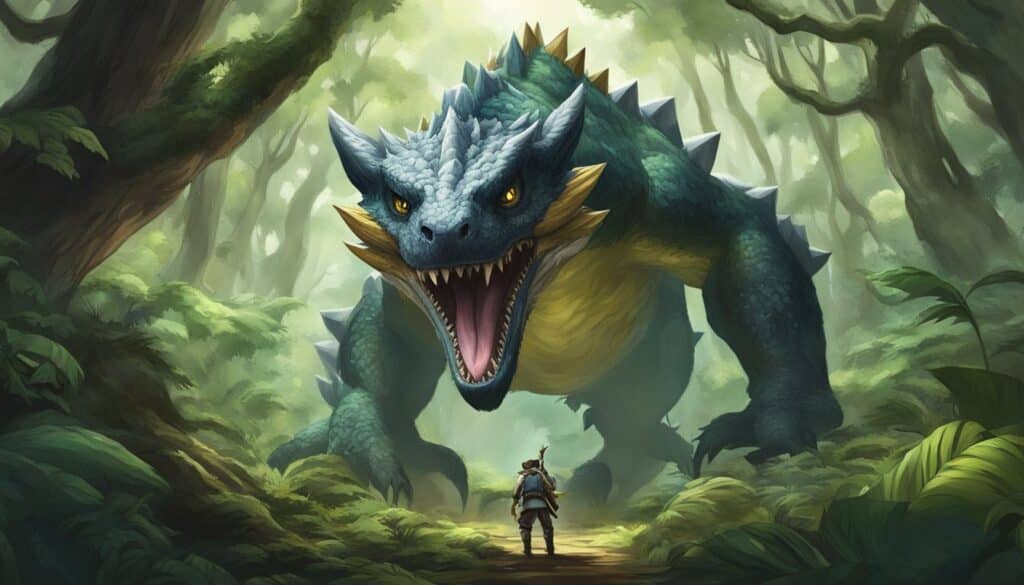
Each small monster possesses unique characteristics and spawns in specific locales. They are more than mere environmental fillers; these creatures provide you with the necessary components for crafting gear and items that will aid you in tackling more formidable beasts.
Recognizing the importance of small monsters and efficiently harvesting their drops will ensure you are well-equipped for the challenges that lie ahead.
As you navigate through diverse habitats in your quests, you’ll encounter these small monsters in varying frequencies.
While they may seem inconsequential at first glance, their drops can give you an edge in battle, whether it’s through enhancing your weapons or providing the means to concoct powerful consumables.
Keep an eye out for the telltale signs of their presence and learn to harvest what they offer efficiently. Your mastery of this aspect of the game could be the difference between victory and defeat in the clashes to come.
Understanding Monster Hunter Now
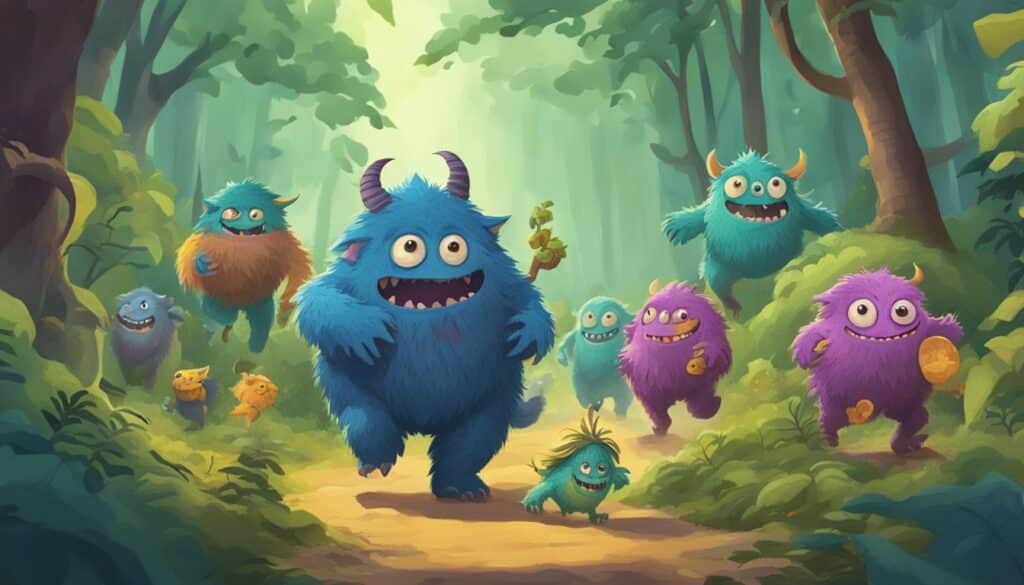
In “Monster Hunter Now,” you step into a vibrant ecosystem filled with large and small creatures, where your skill in tracking, battling, and collecting resources from defeated monsters defines your progress. Game8, as an unofficial resource, provides a detailed wiki, guiding players through various aspects of the game.
Site Resources:
- Monster Guides: Find comprehensive information about every monster, including small ones, with details on their location and materials they drop upon defeat.
- Articles Quality: Strive for accuracy and understandability, aiming to enhance your gaming experience.
- Usability: The site is structured for you to navigate easily, enhancing your gameplay alongside the game’s own tutorials.
Game Understanding:
- As you hunt, collect drops from small monsters to craft gear.
- Tackling sub-quests unlocks new monsters and gear.
The site also runs surveys to gather player feedback, focusing on article quality and site usability, ensuring you have access to an ever-improving repository of game knowledge.
Game8 Recommends:
- Use the wiki: A valuable asset for quick learning.
- Participate in Surveys: Help improve the site’s content and utility.
By making use of Game8’s resources, you become better equipped to enjoy and succeed in the immersive world of “Monster Hunter Now.”
Small Monsters Overview
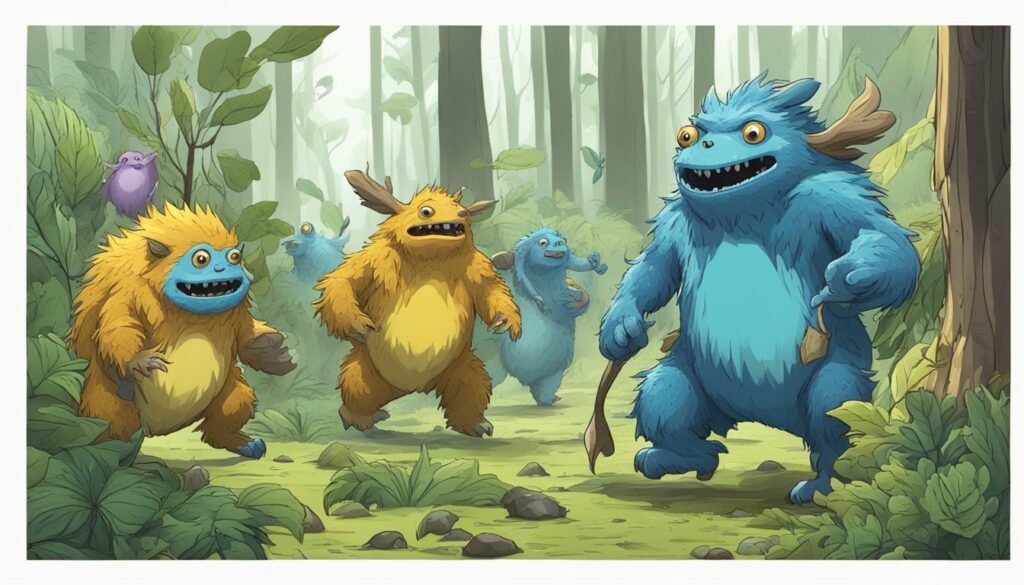
In the expansive world of Monster Hunter Now, small monsters play a crucial role in both the ecosystem and your quests. Unlike their larger counterparts, these creatures may seem less threatening but are vital for various crafting materials and understanding the game’s rich ecology.
When you embark on your journey, you’ll notice different small monsters inhabiting various regions. They often appear in groups within specified habitats and can be identified by the glowing circle around your character model indicating their spawning area. Be attentive to their behaviors, as some may flee while others become aggressive when provoked.
Combat against these creatures highlights their unique abilities and can teach you the nuances of battle tactics, which are essential for tackling larger monsters. Here’s a brief guide on how to approach them:
- Observe their movement patterns and attack when they’re vulnerable.
- Use the appropriate weapon type to exploit their weaknesses for efficient hunting.
- Collect materials they drop, which are indispensable for crafting and upgrades.
For your reference, here’s a table listing a few small monsters encountered in the game along with their drops:
| Monster | Habitat | Materials |
|---|---|---|
| Jagras | Forest | Hide, Scale |
| Mernos | Desert, Swamp | Wingdrake Hide |
| Raphinos | Various Terrains | Scale, Webbing |
Remember, each monster has its own set of materials that you can harvest and the items you obtain are fundamental for enhancing your gear. As you hone your hunting skills, you will uncover more about these creatures and how they fit within the game’s intricate ecosystem. Stay vigilant and learn to adapt; your success as a hunter depends on it.
Significant Small Monsters
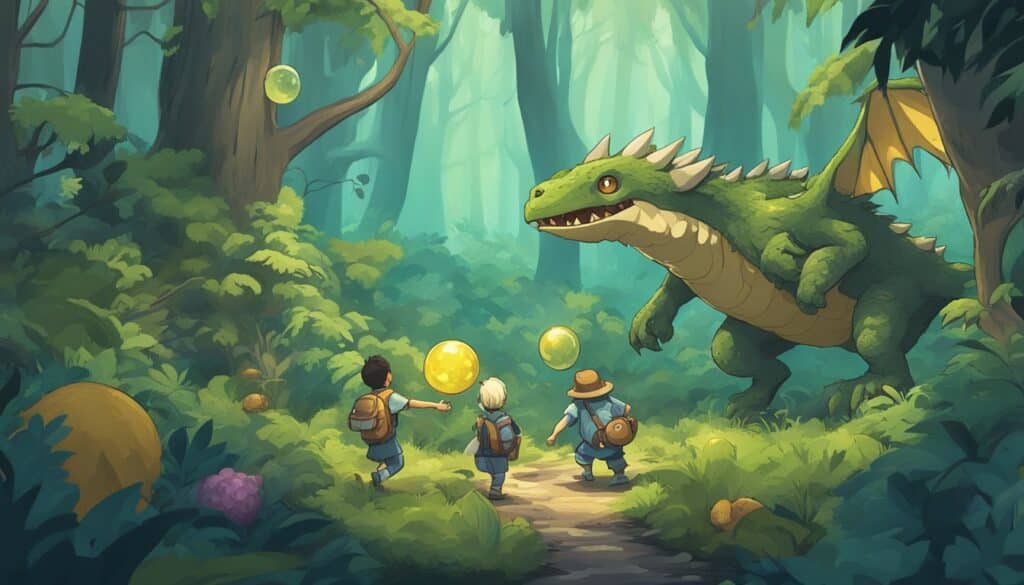
In Monster Hunter Now, certain small monsters stand out due to their unique drops and the locations they inhabit. You’ll encounter them across various environments, from lush forests to arid deserts.
Great Jagras
The Great Jagras is often your first significant encounter in the game. Residing primarily in forests, they are recognized by their ability to swallow prey whole, bulking up their size in the process. Upon defeat, Great Jagras can drop various materials, important for early-game gear and items.
- Location: Forests
- Weaknesses: Fire, Thunder
- Drops:
- Great Jagras Hide
- Great Jagras Scale
- Great Jagras Mane
Kulu-Ya-Ku
The bird-like Kulu-Ya-Ku holds a distinctive behavior of stealing eggs from nests. This small monster frequents both forests and desert terrains. It’s especially vulnerable to water attacks, and defeating it can yield unique crafting materials.
- Location: Forests, Deserts
- Weaknesses: Water
- Drops:
- Kulu-Ya-Ku Plume
- Kulu-Ya-Ku Beak
- Kulu-Ya-Ku Scale
Tobi-Kadachi
Encountering a Tobi-Kadachi challenges you with its aerial agility and electric attacks. Typically found in forest zones, Tobi-Kadachi’s scales and fur are valuable for their electrical properties.
- Location: Forests
- Weaknesses: Water, Fire
- Drops:
- Tobi-Kadachi Pelt
- Tobi-Kadachi Claw
- Tobi-Kadachi Membrane
Barroth
Barroth, a brute wyvern known for its mud-slinging behavior, is a force to be reckoned with in swamp and desert environments. Its thick carapace is sought after for heavy armor sets, making it a valuable target.
- Location: Swamps, Deserts
- Weaknesses: Water, Ice
- Drops:
- Barroth Shell
- Barroth Ridge
- Barroth Claw
Common Drops and Materials
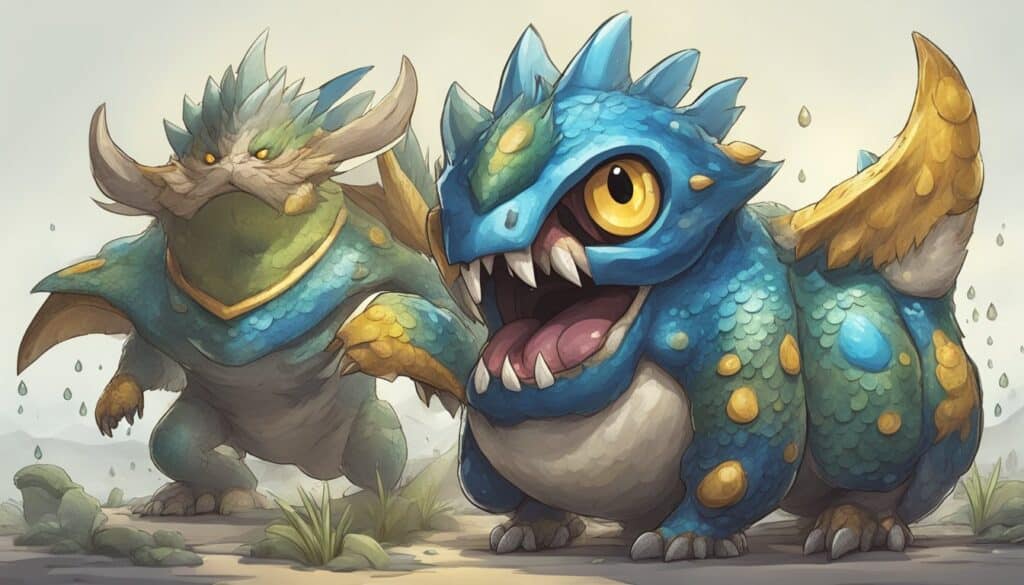
In “Monster Hunter Now”, small monsters provide a variety of materials that are essential for crafting and upgrading your gear. Materials like the Sharp Claw and Wingdrake Hide not only vary in rarity, but are also pivotal in acquiring more sophisticated equipment.
When you face small monsters, you can expect to collect items of different rarity levels. A Rarity 1 item is common, making it more accessible as these creatures are easier to defeat and encounter more frequently.
| Material | Rarity | Usage |
|---|---|---|
| Sharp Claw | 1 | Weapon Crafting |
| Wingdrake Hide | 2 | Armor Crafting |
Sharp Claw, commonly dropped by smaller beasts, is a staple crafting material for creating various types of weapons. It’s your go-to component for any sharp-edged weapon enhancement.
Wingdrake Hide is another common material, yet it holds a bit more rarity than Sharp Claws. Used primarily in crafting stylish and robust armor sets, this resource ensures your defense is as sharp as your offense.
Remember, monster drops vary not only by the type of monster but also by the difficulty of the encounter. While on your hunts, always keep an eye on the prize, as the materials you gather will determine your capability to face tougher challenges ahead.
Engage with confidence and knowledge, and your inventory will soon be rich with rare materials paving the way for your advancement in “Monster Hunter Now”.
Equipment Crafting
In Monster Hunter Now, equipment crafting is a crucial aspect that allows you to enhance your hunting prowess. You’ll use materials dropped by small monsters to forge and upgrade a variety of weapons and armor sets. Begin by gathering crafting materials from defeated monsters.
Weapons:
Crafting powerful weapons relies heavily on specific drops. For instance, a Wingdrake Hide, despite being a common material, is fundamental in creating your early-game gear.
Armor:
As you progress, collecting rarer materials will enable you to craft more robust armor. Armor not only boosts your defense but can also come with skills that enhance your abilities.
Armor Sets:
Each armor piece from a set contributes to a particular skill. When combined, these amplify your hunter’s capabilities. Consider mixing pieces to optimize the skills your hunting style requires.
Below is a list of small monsters and their possible drops:
- Mernos: Wingdrake Hide
- Raphinos: Monster Bone S
- Noios: Quality Bone
Crafting Process:
- Gather materials: Hunt small monsters and collect their drops.
- Select equipment: Choose between crafting new equipment or augmenting existing pieces.
- Manage Resources: Use your materials wisely to craft or upgrade items with desired skills.
Remember, acquiring augmented technology might require special items from small monsters. Regularly defeat these creatures to amass a variety of materials, which are essential for crafting the most powerful weapons and optimized armor sets. Happy hunting!
Small Monster Habitats
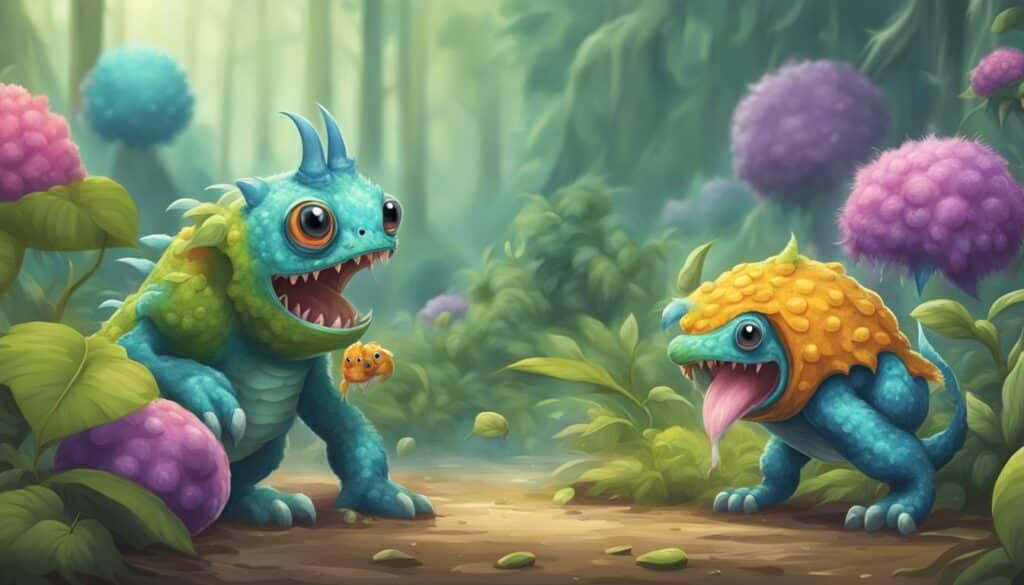
In the diverse world of Monster Hunter Now, small monsters inhabit various ecosystems that require your strategic approach to hunting and gathering. Here’s what you need to know about the habitats where you’ll find these creatures and the conditions that favor their existence.
Forests: These lush areas are teeming with life, providing ample coverage for small monsters. You’ll often find species like Mernos making use of the foliage to hide and forage. Dense woods and the availability of berries make forests ideal for these monsters.
- Example of Forest-Inhabiting Monsters:
- Mernos
- Jagras
Deserts: In contrast to the inviting forests, deserts pose a harsh environment where only the hardiest small monsters can survive. The sweltering sun and sparse water sources mean you can encounter creatures adapted to these austere conditions.
- Example of Desert-Inhabiting Monsters:
- [Desert Monster A]
- [Desert Monster B]
Water Zones: Proximity to water bodies is crucial for some small monsters. Areas like rivers, lakes, and swamps attract those that require constant access to water for hydration or as a part of their life cycle.
- Example of Water Zone-Inhabiting Monsters:
- [Aquatic Monster A]
- [Aquatic Monster B]
Dark Places: Certain smaller monsters favor the darkness. Caves and other dimly-lit areas serve as prime real estate for creatures that either prey in the darkness or avoid becoming prey themselves.
- Example of Dark Place-Inhabiting Monsters:
- [Cave-Dwelling Monster A]
- [Cave-Dwelling Monster B]
Your knowledge of these habitats is crucial to track and engage with small monsters effectively. Each environment presents unique challenges, so adapt your hunting strategies accordingly to attain success in Monster Hunter Now.
Combat Strategies and Weaknesses
When engaging in combat with small monsters in Monster Hunter Now, your strategy should be efficient and direct. Remember that these creatures often lack the resilience of larger beasts, meaning your encounters can be brief if handled correctly.
Jagras:
Aptly vulnerable to Fire and Thunder attacks, targeting a Jagras can be straightforward. Use weapons that capitalize on these elemental weaknesses, and always aim to strike quickly to prevent it from signaling its pack.
- Weapons to Use: Fire-based swords or Thunder maces.
- Tip: Keep your movements agile to avoid being swarmed.
Shamos:
The Shamos, residing in swamps, may not have specific elemental weaknesses mentioned, but rapid and precise hits can take them down. Here, your reflexes matter. Execute a perfect dodge to avoid their attacks and counter swiftly.
- Weapons to Use: Your choice, as long as it delivers quick hits.
- Tip: Stay mobile and be ready to dodge.
Mernos, Raphinos, and Noios:
Information on specific weaknesses isn’t available, but these creatures are typically less of a threat individually. Concentrate on isolating them from any group to dispatch swiftly.
- Weapons to Use: Any that you can wield quickly.
- Tip: Focus on one monster at a time to minimize the threat.
Across all encounters with small monsters, maintain a neutral stance, reacting to their moves rather than charging in. Be confident in your ability to read the monsters’ patterns and use the right weapon for the job. Lastly, always have your weapon prepared and sharpened to maximize its effectiveness.
- Perfect Dodge: Mastering this can be a game-changer, giving you the upper hand by opening up an opportunity for counterattacks.
- Combat Tip: Hit and run tactics are very effective against small monsters. Hit them once or twice, then back off before they can retaliate.
Monster Types and Features
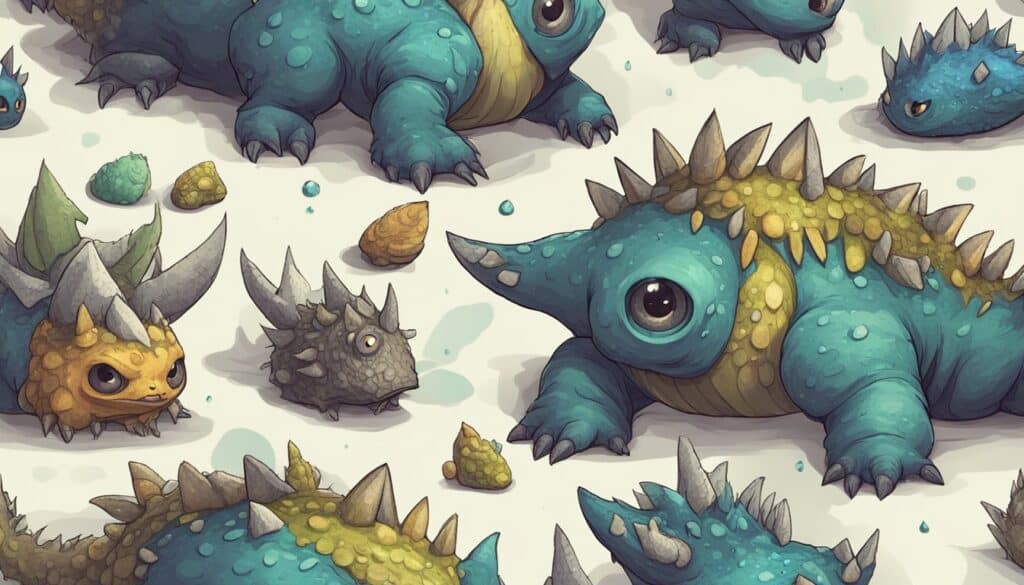
In Monster Hunter Now, your familiarity with small monsters plays an essential role in mastering the game. Small monsters vary greatly, with some being more formidable or offering different resources.
Fanged Wyverns: Noteworthy within this category is the Jagras, which falls prey to fire and thunder attacks. They often move in packs, and taking them down can yield valuable materials.
Wingdrakes: For example, the Mernos is a type of wingdrake that feeds on berries. Startling these creatures causes them to retreat en masse. They can be a source of essential crafting items.
Here’s a brief breakdown of small monster characteristics:
| Type | Elemental Weakness | Common Habitats | Drops |
|---|---|---|---|
| Fanged Wyvern | Fire, Thunder | Various | Scales, hides |
| Wingdrake | Varied per species | Forests, deserts | Feathers, wing parts |
As you strategize, utilize water, fire, poison, thunder, and paralysis attacks according to a monster’s vulnerability. Each type’s susceptibility to elements and ailments is unique.
No comprehensive tier list exists for small monsters since they primarily serve as environmental fauna and crafting resource providers rather than significant hunting targets.
As you progress, understanding the behavioral patterns and weaknesses of each can significantly impact your hunting efficiency and resource gathering. Always approach with a tactical mindset to optimize your hunts.
Hunting Experience and Challenges
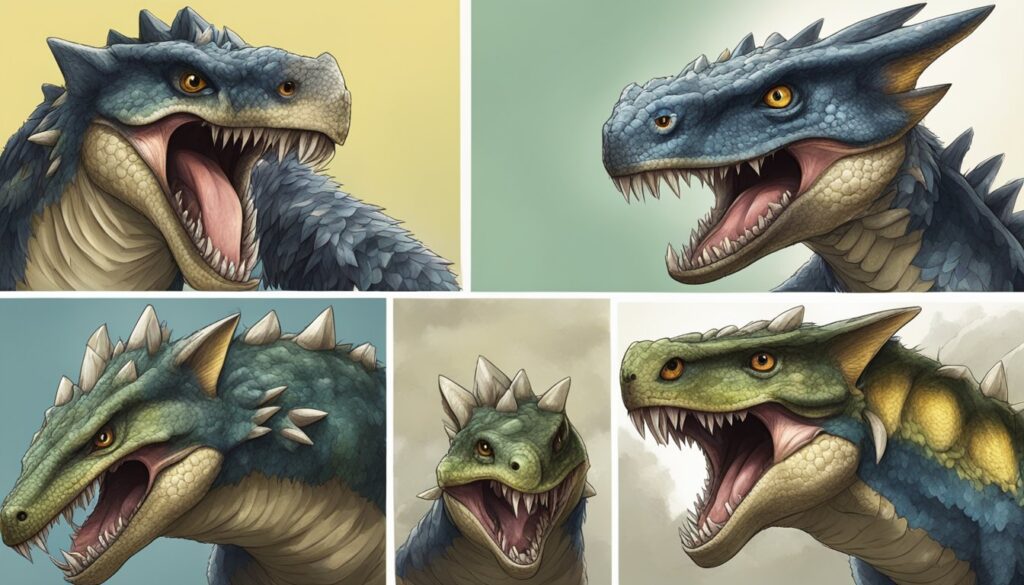
When embarking on quests to hunt small monsters in Monster Hunter Now, you are signing up for a rewarding yet challenging experience. Small monsters, like the cunning Jagras, offer a unique challenge compared to their larger counterparts.
Due to their pack behavior, understanding monster patterns is vital, enabling you to exploit their weaknesses effectively, such as their susceptibility to Fire and Thunder attacks.
Hunting gear plays a pivotal role in your success. You’ll want to craft and upgrade gear suited to your hunting style and the specific monsters you’re targeting. Your gear choices impact not just your defense but also your attack capabilities and elemental affinities.
Experience is both a reward and a requirement in Monster Hunter Now. As you complete story quests and engage in battles, you gain experience that allows you to tackle more formidable monsters and unlock advanced gear. The game scales in difficulty, so each victory prepares you for the next, more arduous challenge.
The story quests serve as your roadmap through the game, presenting you with an array of battles that will test your adaptability and mastery of the tools at your disposal. Each encounter is designed to sharpen your skills and provide you with the materials needed to face future challenges.
Remember:
- Be strategic about your gear choices; they greatly influence battle outcomes.
- Hunt efficiently by learning monsters’ weaknesses.
- Utilize the experience from battles and quests to improve your hunting capabilities.
Your journey as a hunter will be full of surprises and tests of skill, ensuring that your hunting experience remains engaging and progressively demanding.
In-Game Guides and Community Resources
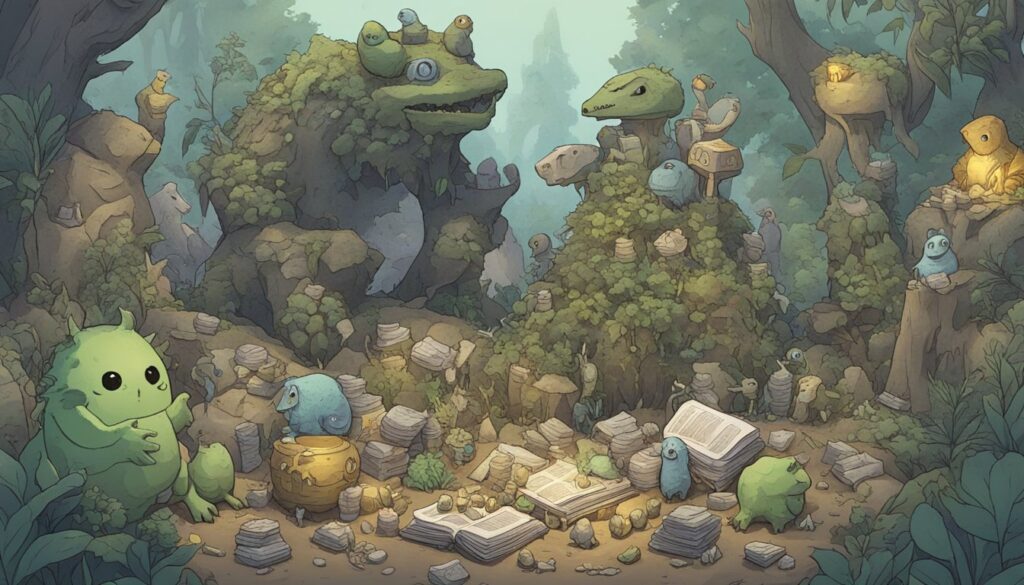
When navigating through Monster Hunter Now, you may often seek guidance on small monster drops and strategies. Numerous in-game guides are your primary source of information, providing you with essential insights on how to locate and hunt these creatures. For instance, you can refer to the Small Monster Locations and Drops section within the game to find out exactly where to find each monster and what items they yield upon defeat.
Outside the game, community resources offer a wealth of knowledge and discussions. Message boards and forums such as Game8 have various threads dedicated to Monster Hunter Now, where you can participate in conversations or read through comments. Seasoned players often share their experiences, offering tips and advice that may not be immediately apparent from in-game guides alone.
Using the comments sections on these boards enables you to ask specific questions about small monsters and interact with other members of the community. Here, you’ll find discussions about the latest updates, item usage, and strategies for effective hunting. The community’s collective knowledge can be incredibly valuable, providing you with diverse perspectives and tactics.
Remember to leverage the boards to stay updated on game changes. Patch notes and updates might affect small monster behaviors and drops, which are actively discussed and dissected by the community.
Here’s a quick reference for information on small monsters:
- In-game Guides: Check the ‘Small Monster’ section for spawn locations and drops.
- Community Message Boards: Join conversations and ask questions.
- Comments: Engage with community feedback on specific monsters and items.
Monster Hunter Now and Mobile App Integration
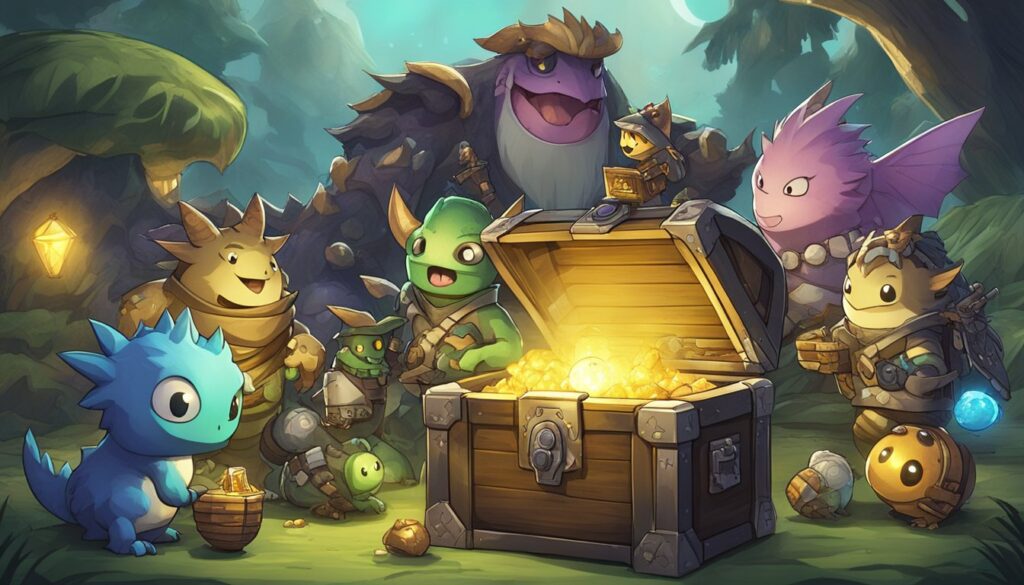
Monster Hunter Now, developed by Niantic – famed creators of Pokémon Go – incorporates the immersive experience of hunting fantastical creatures into a mobile app that’s available on Google Play. As you embark on your monster-hunting adventures, the app integrates augmented reality features, much like its predecessor, allowing you to track and engage with monsters in a real-world setting.
Your hunt takes place on your mobile device, where you can encounter small monsters like Shamos and Mernos, each with distinct habitats such as Desert Swamps and Forests respectively. Successful hunts will reward you with various obtainable materials:
- Shamos: Drops items like the Sharp Claw.
- Mernos: Often yields materials upon defeat.
The app’s interface is designed to be user-friendly, keeping your hunting escapades fluid and engaging. Key features include:
- Tracking: Locate monsters in your vicinity with real-time GPS.
- Collection: Maintain an inventory of materials and drops for crafting.
- Multiplayer: Team up with friends for cooperative hunting sessions.
To get started with Monster Hunter Now, download the app from Google Play, and follow the in-app tutorial which will guide you through the basics of hunts and in-game mechanics. Remember to approach the game with strategy and patience, as each monster showcases different behaviors and weaknesses. Keep your wits about you, and happy hunting!
Palico Companions
In the realm of Monster Hunter Now, your Palico companion is more than just a friendly feline face; it serves as your indispensable ally in combat and quests alike. Palicoes are renowned for their versatility on the battlefield, providing you with both offense and defense when tackling daunting creatures.
Role in Combat:
- Offensive Support: Your Palico can engage monsters directly, distracting them and providing you with opportunities to strategize or heal.
- Defensive Abilities: With skills to heal and protect, your Palico can be the lifeline you need in the heat of battle.
When embarking on quests, a Palico’s value is unquestionable. They’re capable of gathering resources for you and, with the right training, they can even deploy useful gadgets that can tip the scales in your favor during tight situations.
Palico Equipment:
- Armor & Weapons: Equip your Palico with gear tailored to specific quests to maximize their effectiveness.
- Gadgets: Tools like traps and healing devices are crucial add-ons for your Palico’s arsenal.
Understanding your Palico’s abilities and smartly outfitting them for the challenges ahead means the difference between failure and victory. As a hunter, your bond with your Palico is key—nurture it, and you’ll have a fearless companion ready to face Monster Hunter Now’s menagerie of formidable monsters.
Evolution of Monsters
In the Monster Hunter franchise, the evolution of monsters has been a cornerstone of the gameplay experience. As you progress through “Monster Hunter Now,” you will encounter a varied roster of creatures, including the elusive small monsters which play a critical role in the game’s ecosystem.
New Monsters: Every installment in the series introduces novel creatures, and “Monster Hunter Now” continues this tradition. These new monsters bring fresh challenges and encourage you to adapt your strategies. Their drops are crucial for crafting powerful gear, enhancing your hunter’s abilities.
Large Monsters vs. Small Monsters: While large monsters are the centerpieces of the hunt, the small monsters like Cortos provide equally important components. They may appear less intimidating, but their materials are often required for finer details in crafting.
Table: Cortos Drops
| Cortos Parts | Usage |
|---|---|
| Scale | Armor Creation |
| Wing | Weapon Enhancements |
| Hide | Decorative Enhancements |
The dynamics between small and large monsters reflect an ecosystem’s hierarchy. By paying attention to their interactions, you can predict behaviors and identify the perfect moment to strike or collect resources.
As you immerse yourself in Monster Hunter Now, appreciate how each monster contributes to the larger world. Their evolution from simple designs to complex creatures showcases the series’ growth, inviting both veteran hunters and newcomers to explore and discover.
Player Guides and Tier Lists
In Monster Hunter Now, understanding the tier list of small monsters is crucial for optimizing your hunting strategy. Armor sets and weapons are tailored to counter specific monsters based on their weaknesses and behaviors.
Tier List:
- S-tier: Known for dropping rare materials, focused hunts can yield significant rewards.
- A-tier: Drops useful materials often required for mid-game progression.
- B-tier: Common monsters providing standard loot useful for beginners.
When choosing weapons against small monsters, consider the monster’s weakness to maximize efficiency. Fire and Thunder attacks, for instance, are particularly effective against monsters like Jagras. Here’s a quick guide on weapon selection:
- Fire: Ideal for Fanged Wyverns.
- Thunder: Best for monsters with water-based abilities.
In terms of powerful weapons, the Jagras Blade is recommended starting point due to its balanced stats and elemental flexibility. Enhancing weapons with skills like Sneak Attack and Water Attack increases their damage output significantly.
For armor sets, look for pieces that complement your playstyle. If you frequently execute a perfect dodge, consider armor that boosts evasion or prolongs invincibility frames. Here’s an example of an early-game armor set:
- Helm: Alloy Helm
- Mail: Hunter's Mail
- Arms: Jagras Vambraces
- Waist: Chain Belt
- Legs: Jagras Greaves
Each piece may confer additional skills, such as Water Attack Lv. 1, further tuning your abilities to the monsters you’re facing. Understanding and exploiting these details can make your hunting trips vastly more productive.
Special Features and Augmented Technology
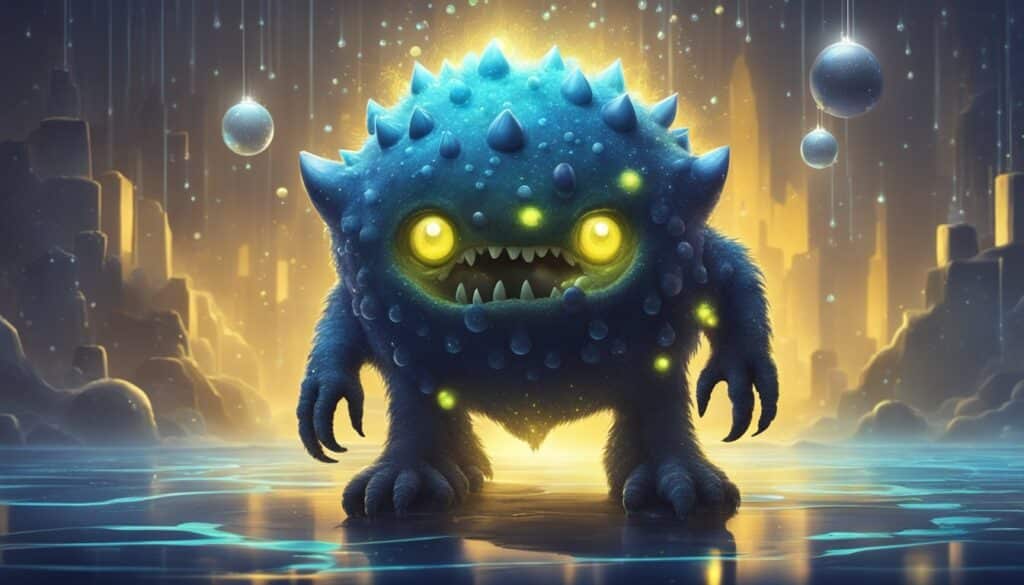
Monster Hunter Now introduces an array of special features through augmented technology which is designed to enhance your gameplay experience. This technology allows for a seamless in-game guide, providing you with real-time tips and tricks tailored to your current in-game situation.
- Dynamic In-Game Guide: By analyzing your play style and monster encounters, the guide generates recommendations to improve your hunting efficiency.
- Augmented Reality Markers: Use your device to scan your surroundings, revealing hidden monsters and items that are not normally visible.
When you encounter small monsters, the game employs augmented reality to provide a detailed overlay of each creature’s weakness and material drops directly in your field of view. This ensures that you’re always equipped with the knowledge to exploit their weaknesses.
- Weakness Display: Instantly know which elements are most effective against the monsters you face.
- Material Drop List: A quick reference of what each monster may drop, aiding in your collection of materials for crafting.
Furthermore, the tips and tricks are context-sensitive, offering advice based on the specific monster you’re tracking or the environment you’re hunting in.
| Context | Tips & Tricks |
|---|---|
| Pack Monsters | “Use fire-based attacks for an edge.” |
| Solo Creatures | “Go for quick, evasive strikes to wear it down.” |
| Environment Interaction | “Utilize surrounding traps and natural hazards.” |
With this technology at your fingertips, your hunts are not only about raw skill but also about smart strategies and adapting to the dynamic ecosystem of Monster Hunter Now. Keep the augmented guide enabled to enrich your prowess as a hunter.
Frequently Asked Questions
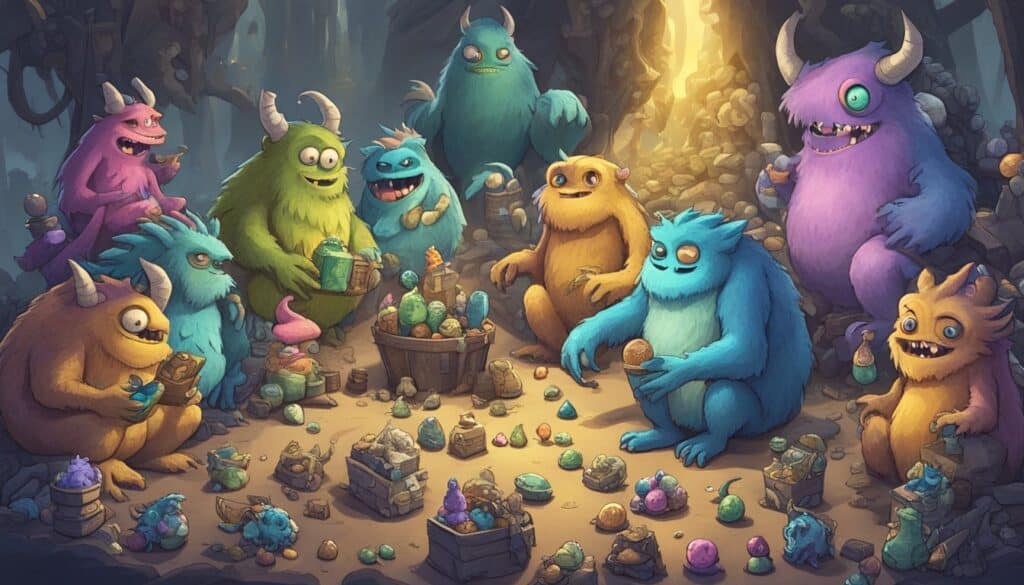
In this section, you’ll find concise answers to common queries about hunting small monsters in ‘Monster Hunter Now’, information on drop rates, and the rewards for different hunting strategies.
How do you effectively hunt small monsters in Monster Hunter Now?
To hunt small monsters effectively, focus on understanding their behavior patterns and weaknesses. Equip yourself with the right weapons and gear to exploit their vulnerabilities.
What are the drop rates for small monsters in Monster Hunter Now?
The drop rates for small monsters vary, typically offering common materials frequently, with rarer drops at a lower percentage. Each monster has a unique loot table that dictates these rates.
What elements should be utilized for maximum efficiency when hunting small monsters?
Use elements against small monsters that they are weak to; this information can often be found in the game’s monster field guide. Fire, water, thunder, ice, and dragon elements can be key to quick victories.
How does the spawning mechanism work for small monsters in Monster Hunter Now?
Small monsters have set spawn locations and times within the game world. Some will respawn after a certain period, while others might only appear under specific conditions or quests.
What kind of rewards can you expect from capturing versus slaying monsters?
Capturing monsters typically yields more and sometimes different rewards than slaying them. This includes a higher chance for rare materials, making it a preferred method for resource farming.
Which upgrade materials can be obtained from hunting small monsters?
Small monsters provide materials for crafting and upgrading equipment. These include a variety of hides, scales, and bones which are essential for improving your gear’s levels and stats.

